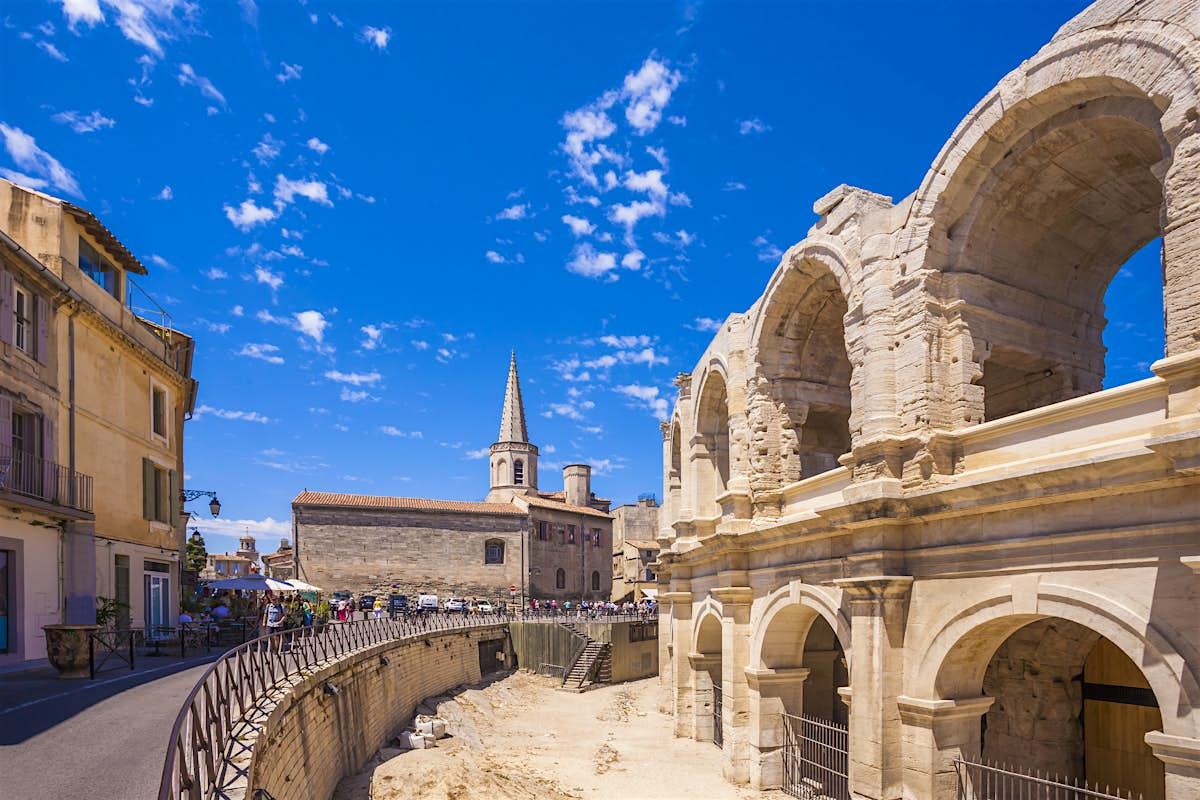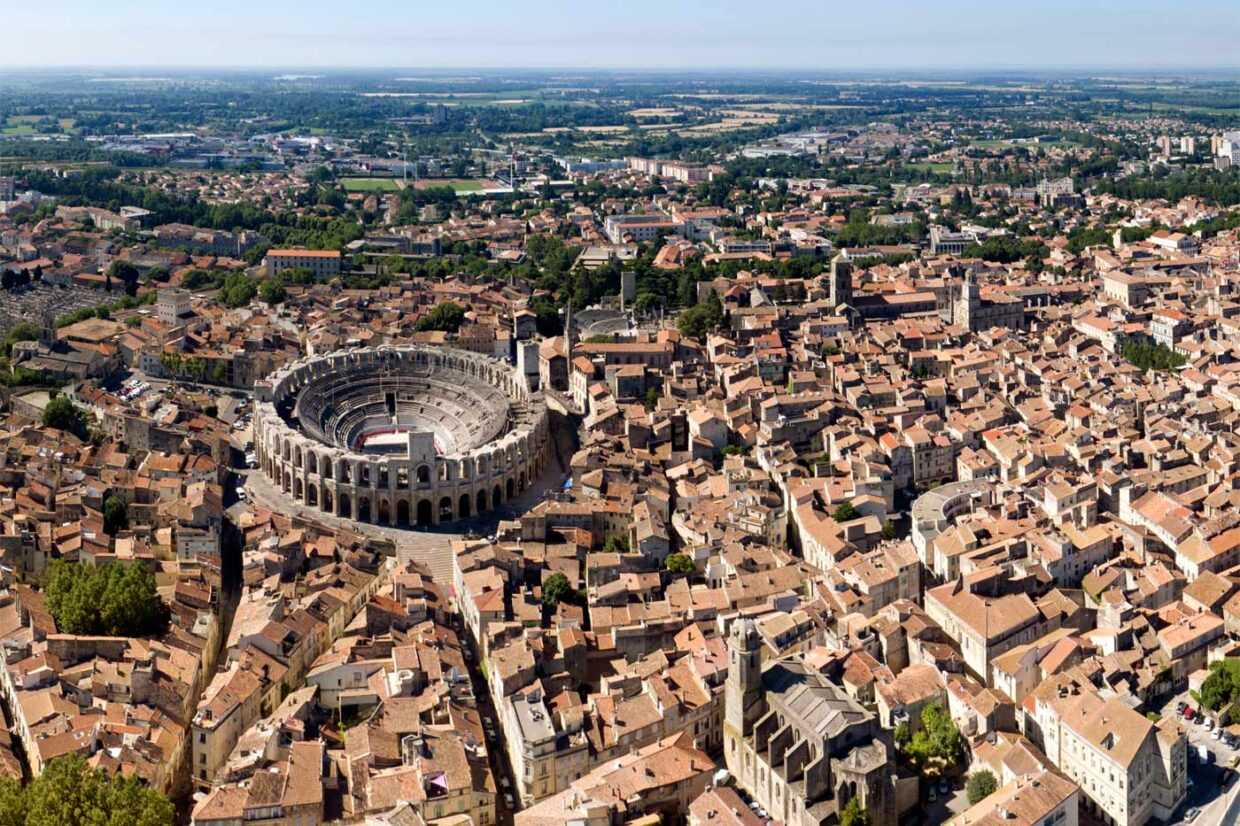
Pin by Holly Hunt on the kingdom of arles Natural landmarks, Landmarks, Nature
From the 5th to 9th centuries Arles was caught up in a series of dilapidating invasions by Visigoths, Barbarians and Saracens and remained a city in decline. In the 12th century the region became the Kingdom of Arles under the rule of Rudolf II and the city recaptured some of its former glory as capital of this new independent state.

Visit the Roman Remains of Arles, Provence
kingdom of Arles, was formed in 933, when Rudolf II, king of Transjurane Burgundy, united the kingdom of Provence or Cisjurane Burgundy to his lands and established his capital at Arles. Holy Roman Emperor Conrad II annexed the kingdom to the Holy Roman Empire in 1034, but few of his successors troubled to be crowned as king of Arles. The imperial rulers exercised little control, and the.

Arles travel Provence & the Côte d'Azur, France Lonely
The Kingdom of Burgundy, known from the 12th century: 140 as the Kingdom of Arles, also referred to in various context as Arelat, the Kingdom of Arles and Vienne, or Kingdom of Burgundy-Provence, was a realm established in 933 by the merger of the kingdoms of Upper and Lower Burgundy under King Rudolf II.It was incorporated into the Holy Roman Empire in 1033 and from then on was one of the.

Guide To Arles, an Unexpected Beauty in Provence
Other articles where Kingdom of Arles is discussed: Burgundy: History of Burgundy:.the 13th century as the kingdom of Arles—the name Burgundy being increasingly reserved for the county of Burgundy (Cisjurane Burgundy) and for the duchy of Burgundy.

Pin em the kingdom of arles
When Boso of Provence acquired the region in 879, it was known as Lower Burgundy until it was merged with Upper Burgundy in 933 to form the Kingdom of Arles. The counts of Arles began calling themselves "count of Provence"; although in name vassals, they were de facto autonomous princes. After 1032, the county was part of the Holy Roman Empire.

Pin on the kingdom of arles
After the 13th century, it was known as the kingdom of Arles; the name Burgundy was applied to the duchy of Burgundy, formed in the 9th century from lands in the northwestern part of the original kingdom. On the death of Burgundy's duke in 1361, the duchy reverted to the French crown. Given to Philip II, by 1477 its lands extended into the.

Pin on the kingdom of arles
Arles, Roman and Romanesque Monuments. Arles is a good example of the adaptation of an ancient city to medieval European civilization. It has some impressive Roman monuments, of which the earliest - the arena, the Roman theatre and the cryptoporticus (subterranean galleries) - date back to the 1st century B.C. During the 4th century Arles.

Visit Arles and know all its secrets in 8 days Hôtel de l'Amphithéâtre
Arles is a gateway to Camargue, the gypsies homeland. It is the meeting point of the biggest férias, where nearly 12 000 spectators gather for the festivities in the centenary-old arena. Arles and its culture and history. The cultural life of the provencal city of Arles is very intense and developed.

Pin on the kingdom of arles
Arles, kingdom of. Arles, kingdom of, was formed in 933, when Rudolf II, king of Transjurane Burgundy, united the kingdom of Provence or Cisjurane Burgundy to his lands and established his capital at Arles. Holy Roman Emperor Conrad II annexed the kingdom to the Holy Roman Empire in 1034, but few of his successors troubled to be crowned as king.

Pin on the kingdom of arles
During the 10th century Arles became the capital of the Kingdom of Arles, which was established by Rudolph II. Arles became an independent entity during the 12th century, was absorbed into the county of Provence in 1239, and finally became part of the Kingdom of France in 1481. Thus, as a fortified town, Arles Amphitheatre provided some level.

CoatofArms Kingdom of Arles by iCaramello on DeviantArt
The Kingdom of Burgundy, known from the 12th century as the Kingdom of Arles, also referred to in various context as Arelat, the Kingdom of Arles and Vienne, or Kingdom of Burgundy-Provence, was a realm established in 933 by the merger of the kingdoms of Upper and Lower Burgundy under King Rudolf II. It was incorporated into the Holy Roman Empire in 1033 and from then on was one of the empire.

Pin em the kingdom of arles
The Kingdom of Burgundy, known from the 12th century: 140 as the Kingdom of Arles, also referred to in various context as Arelat, the Kingdom of Arles and Vienne, or Kingdom of Burgundy-Provence, was a realm established in 933 by the merger of the kingdoms of Upper and Lower Burgundy under King Rud

Pin on the kingdom of arles
The Kingdom of Arles (Arelat) or Second Kingdom of Burgundy was a Frankish dominion established from lands of the early medieval Kingdom of the Burgundians in 933 by the merger of the kingdoms of Upper and Lower Burgundy under King Rudolf II.. The new kingdom was named after the Lower Burgundian residence at Arles.Its territory stretched from the Mediterranean Sea to the High Rhine in the.

Pin on the kingdom of arles
The Kingdom of Burgundy, known from the 12th century: 140 as the Kingdom of Arles, also referred to in various context as Arelat, the Kingdom of Arles and Vienne, or Kingdom of Burgundy-Provence, was a realm established in 933 by the merger of the kingdoms of Upper and Lower Burgundy under King Rudolf II. It was incorporated into the Holy Roman Empire in 1033 and from then on was one of the.

Pin on the kingdom of arles
In the 10th century, Arles became the capital of the kingdom of Burgundy, later known as the kingdom of Arles. It emerged as an independent entity, reminiscent of the Italian republics, gaining prominence in commerce and navigation. However, in 1239, it was absorbed into Provence.

Arles / Roman and medieval heritage tour Arles, Uzès & Pontdu / Every summer since 1970
ARLES, KINGDOM OF, the name given to the kingdom formed about 933 by the union of the old kingdoms of Provence (q.v) or Cisjurane Burgundy, and Burgundy (q.v.) Transjurane, and bequeathed in 1032 by its last sovereign, Rudolph III., to the emperor Conrad II. It comprised the countship of Burgundy ( Franche-Comte ), part of which is now.